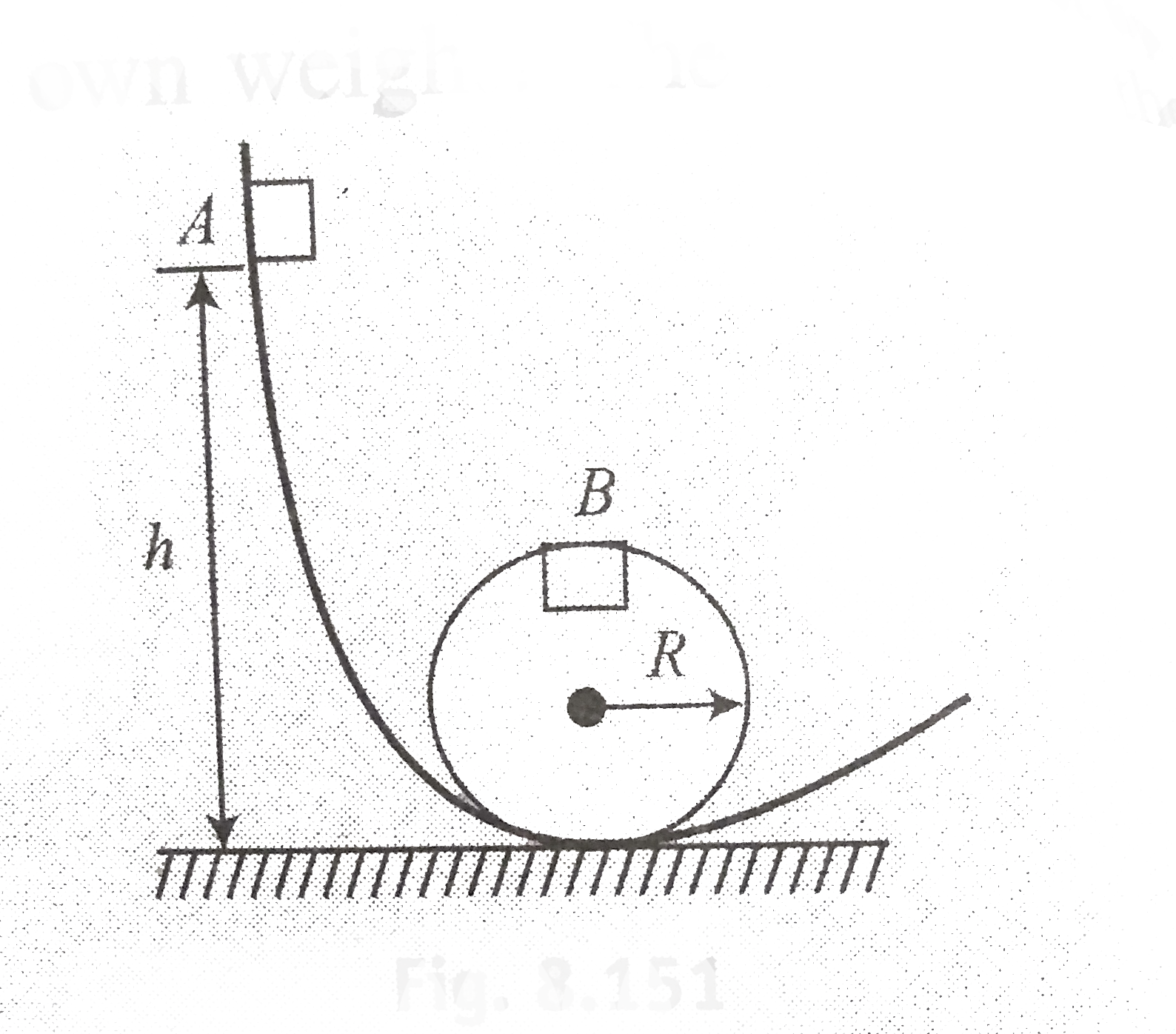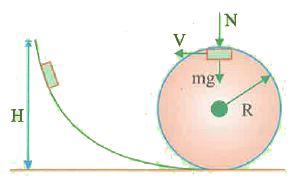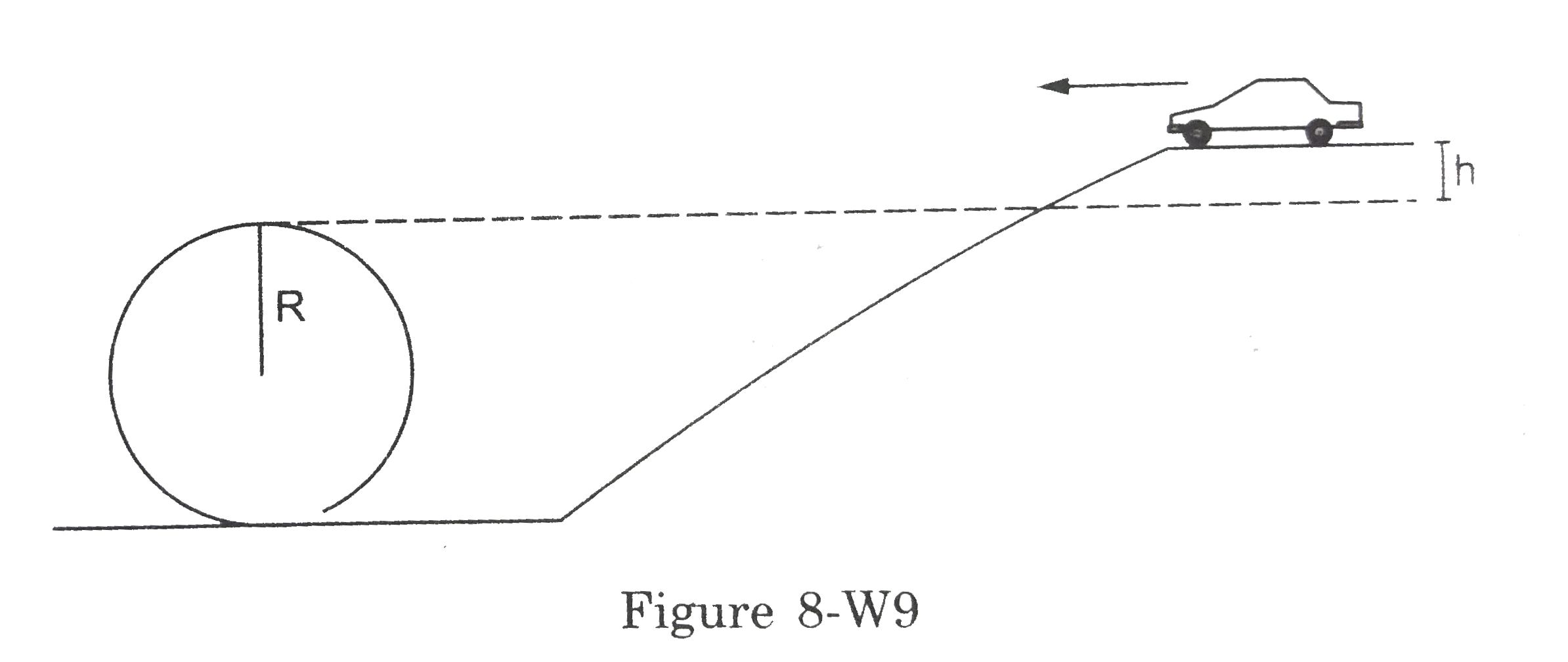A body slides without friction from a height H = 60 cm and then loops the loop of radius R = 20 cm at the bottom of incline. The ratio of forces exerted on the body by the track at A,B and C are (g=10ms−2)
 Solution in Telugu
Solution in Telugu
1:4:7
7:4:1
4:1:7
7:1:4
The correct Answer is:B
Step by step video, text & image solution for A body slides without friction from a height H = 60 cm and then loops the loop of radius R = 20 cm at the bottom of incline. The ratio of forces exerted on the body by the track at A,B and C are (g = 10 ms^(-2)) by Physics experts to help you in doubts & scoring excellent marks in Class 11 exams.
Updated on:21/07/2023Topper's Solved these Questions
- WORK, POWER & ENERGY Book:AAKASH SERIESChapter:WORK, POWER & ENERGY Exercise:EXERCISE - II (ELASTIC COLLISIONS)
Explore 8 Videos
- WORK, POWER & ENERGY Book:AAKASH SERIESChapter:WORK, POWER & ENERGY Exercise:EXERCISE - II (Inelastic COLLISIONS)
Explore 4 Videos
- WORK, POWER & ENERGY Book:AAKASH SERIESChapter:WORK, POWER & ENERGY Exercise:EXERCISE - II (POWER)
Explore 17 Videos
- WORK POWER ENERGYBook:AAKASH SERIESChapter:WORK POWER ENERGYExercise:EXERCISE - 3
Explore 61 Videos
Similar Questions
A body of mass 6kg travelling with a velocity 10 m/s collides head - on and elastically with a body of mass 4kg travelling at a speed 5 m/s in opposite direction. The velocity of the second body after the collision is
View SolutionA 1kg ball moving at 12ms−1 collides head on with a 2kg ball moving in the opposite direction at 24 m/s. The velocity of each ball after the impact, if the coefficient of restitution is 2/3, is
View SolutionA bullet loses 25% of its initial kinetic energy after penetrating through a distance of 2cm in a target. The further distance it travels before coming to rest is
View SolutionIf →A+→B=→Rand2→A+→B is perpendicular to →B then
View SolutionThe block on the loop shown slides without friction. At what height from A it starts so that it passes against the track at B with a net upward force equal to its own weight? The radius of the loop is R.

View SolutionA body slides without friction from a height H=60cm and then loops the loop of radius R=20cm at the bottom of an incline. Find the ratio of forces exerted on the body by the track at the positions A,B and C(g=10ms−2).
 .
.
View SolutionA frictionless track ABCDE ends in a circular loop of radius R . A body slides down the track from point A which is at a height h = 5 cm . Maximum value of R for the body to successfully complete the loop is
View SolutionA frictionless track ABCDE ends in a circular loop of radius R. A body slides down the track from point A which is at height h = 5cm. Maximum value of R for a body to complete the loop successfully is
View SolutionA frictionless track ABCD ends in a semicircular loop of radius R.A body slides down the track from point A which is at a value of R which is at a height h=5 cm. Maximum value of R for the body to successfully complete the loop is
View SolutionAn inclined track ends in a circular loop of radius r. From what height on the track a particle should be released so that it completes the loop, assuming there is no friction ?
View SolutionA frictionless tracke ABCDE ends in a circular loop of radius 'r' A body slides down the track from the point 'A' which is at a height h=10 cm . The maximum value of 'r' for the body to successful complete the loop is
View SolutionA body is allowed to slide down a frictionless inclined track under gravity from a height of 10 cm . The track ends in a circular loop of diameter D. The body is just able to complete the circular track , then the diameter of the track will be
View SolutionA body slides down an inclined surface which ends into a vertical loop of radius R = 40cm.

What must be the height H of the inclined surface for the body so that it does not leave contact with the surface even at the uppermost point of the loop? Assume friction to be absent.
View SolutionA body slides without friction from a height H=60cm and then loops the loop of radius R=20cm at the bottom of an incline. Find the ratio of forces exerted on the body by the track at the positions A,B and C(g=10ms−2).
 .
.
View SolutionFigure shows a loop the loop track of radius R. A car (without engine) starts from a platform at a distance h above the top of the loop and goes around the loop without falling off the track. Find the minimum value of h for a successful looping. Neglect friction.

View Solution

